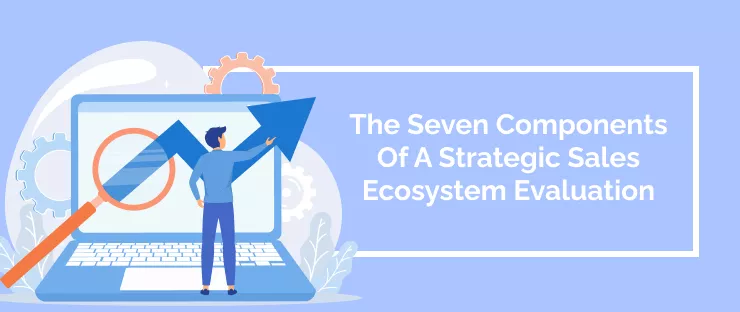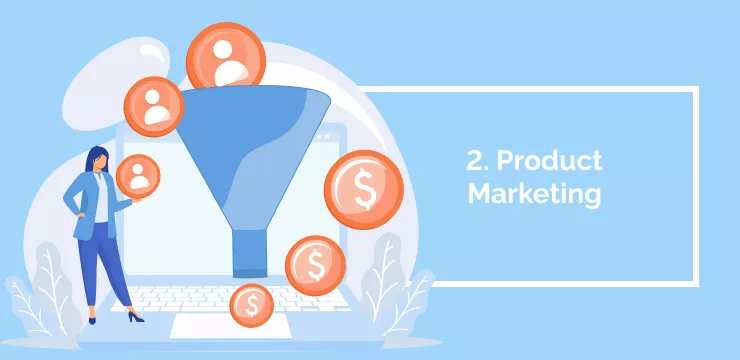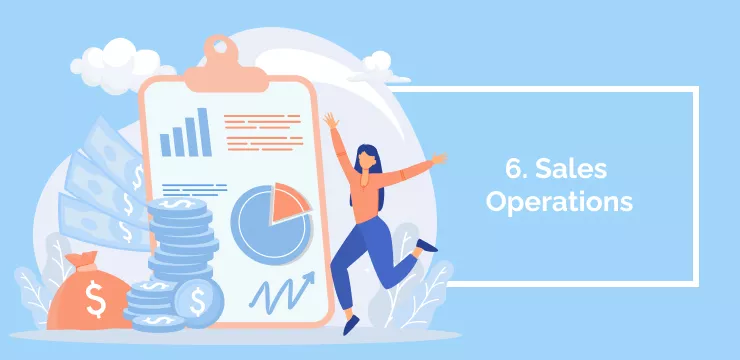
The sales ecosystem depends on interconnectedness and performance management. Sales teams are critical for a myriad of companies and play a major part in progressing customers along the sales pipeline, facilitating the end-to-end customer journey and ultimately increasing the bottom line.
Sales executives can quickly become overwhelmed with competing messages and priorities from different departments. However, sales enablement breaks down the barriers between these departments to streamline efforts and help sales teams access the information, tools, and resources they need.
A Forrester survey reports that Sales Performance Management solutions can support a 5-10% productivity lift. Additionally, figures show that in the past 12 months (as of January 2019) SPM solutions were implemented by 6% of B2B sales leaders—with a further 29% planning implementations in the next 18 months.
Change management plays a vital role in sales enablement. It’s essential to manage the change process before, during, and after implementation to ensure everyone is on board with the new paradigm. Organizational change can be difficult, but it’s essential to ensure that all stakeholders support the new approach to ensure sales success.
Once a sales enablement strategy has been implemented, evaluating how well it works for your organization is also key. You’ll need to look at quantitative and qualitative data to determine if the strategy meets its revenue generation goals.
There are seven main components of the sales enablement ecosystem that practitioners need to partner with for salespeople to be successful:
- Demand Generation
According to Gartner, B2B marketers must implement top strategies to fuel growth, acquire new customers and achieve profitability within today’s challenging market.
Both demand generation marketing teams and sales enablement hold a lot of responsibility. The main goal for the demand gen team is to use targeted marketing campaigns that create awareness and interest in what a company has to offer, as well as nurture programs that progress current or potential leads along the journey until they are ready to make a purchase.
The next logical step in the buying journey is sales enablement. This helps sellers interact and engage with leads and prospects, providing a seamless experience for potential customers completing their customer destination journey. Close collaboration is among the most critical aspects between demand gen and sales enablement.
Jen Spencer, vice president of sales and marketing at SmartBug Media, explains that “in demand gen, you are crafting the message, creating demand, positioning your company as a thought leader. Sales enablement is a natural extension of what you are already doing; it is the next step in that customer’s buying journey.” According to Jen, material and messaging often overlap between these two departments, which makes sense since they go hand-in-hand.
- Product Marketing

Mckinsey’s Modern Marketing Report states that marketing needs to modernize a specific set of capabilities and mindsets to drive growth in the digital age.
Product marketers know everything about the capabilities of their company’s solution, how it compares to competitors, and what core cases it can be used for. This expertise is essential so that salespeople understand its value, and they, in turn, explain this complex subject matter to customers clearly.
If sales enablement and product marketing are not working together, they will quickly become a hindrance to each other. Practitioners should work hard to maintain this relationship and keep product marketing involved in sales execution efforts.
“Our product marketing department not only trains our sales representatives but also works with our sales trainer to ensure that the messaging is effective for our account executives,” said Lindsay Millar, director of sales enablement at Rubrik.
- Field Marketing
Field marketing bridges salespeople and customers in direct, face-to-face buyer engagements. Field marketers help create opportunities for direct interaction between buyers and sellers by planning and coordinating events. Given that they are experts on buyer behavior, field marketing professionals know how to guide salespeople so they can attract interest through messaging, selling skills, and processes.
Because sales leaders can’t always be in the field, those who work in enablement must collaborate with field marketing to ensure buyers respond favorably to sales messaging and tactics.
“Salespeople that are out in the field are all by themselves,” said Laura Welch, director of sales enablement at HP. “They’re talking to new people and putting themselves out there. They’re trying out new messaging you’ve created in your little bubble in your office that you think will be awesome. They’re speaking it, and they’re hoping it lands well.”
- Communications

The communications team handles messages from different areas of the organization and transforms them into content that is easy to understand for internal and external audiences. This might include managing branding, social media, public relations, or internal communications.
Sales enablement ensures that sales communications align with the corporate brand. They help communicate major initiatives and information from different departments to the sales team so they can do their jobs effectively. Sales enablement needs to work closely with the communications team to streamline messaging and ensure all sales communications are on brand.
“Since there are many teams who want to communicate with the sales organization, it’s our job in sales enablement to make sure that they receive correct information and aren’t overloaded with an excess of noise,” said Taboola’s senior sales enablement lead Lena Chudasama.
- Human Resources
From an employee’s first day, HR is responsible for their success at an organization by supplying the necessary resources and support. This ranges from bringing in sales talent to nurturing professional development and creating a culture of satisfied employees.
Since sales enablement is mainly responsible for onboarding new sales employees, Human Resources has become a core partner on which Sales Enablement practices rely. This partnership is vital as Sales Enablement becomes more involved in managing hiring plans, retention programs, professional development, and mapping out employee competencies.
“Having a good partnership with HR is key for enablement,” said Devon McDermott, vice president of global enablement at CM Group. “For us, they’re part of our onboarding accountability flow. By having a strong relationship with HR, we can take a more holistic approach to onboarding and go beyond just the bottom line.”
- Sales Operations

Gartner states that sales operations leaders can make these changes to improve functional effectiveness and deliver a competitive advantage that drives sales success.
Sales operations and sales enablement are two functions that go hand-in-hand. In many organizations, the sales enablement function originated from a need within the sales operations function to do more with data and insights on sales performance.
While analytics, processes, reporting, and technology fall under sales operations, driving tool adoption, designing training programs and streamlining processes fall under sales enablement. Sales drive top-line growth, but marketing supports and enables it. Organizations can maximize their sales potential when both teams work together with cohesive strategies.
Systems responsible for organizing data and managing resources need to be well-integrated. Too often, sales organizations rely on different systems for lead generation, tracking customer interactions, and managing sales pipelines. This creates silos that hinder collaboration, transparency, and decision-making.
“Sales operations provides strategic planning and uses tactics to identify areas for improvement in our processes, find indicators of future success or failure, and see where new opportunities might arise,” said Imogen McCourt, co-founder, and chief executive at &Grow.io.
- Customer Success/Services
Given that month-to-month, many companies struggle to keep their customers happy and engaged. It falls on the customer success team to build upon the foundations of loyalty set during the pre-sales process. To do their jobs properly, they must maintain close relationships with sales teams.
Sales enablement teams are the bridge between customer success and sales, helping to coordinate activities and ensure that customer success initiatives stay on track. They provide critical insights about how customers interact with products and services and data on which sales strategies are successful or not. Their role is to provide guidance for reps regarding customer engagement – providing them with best practices, processes, and tools to ensure that customers have the best experience possible.
“Sales enablement helps us deliver on our customer service promise,” said Kristin Russel, head of business strategy at Symplr. “Their insights give us a better understanding of our customers and how we can engage them more effectively. Without the help of sales enablement, we would struggle to keep up with our customer’s needs.”
Sales Ecosystem Disablers

Sales organizations can be hindered by various issues, including siloed teams, an outdated technology stack, a lack of customer insights, and inadequate data to track progress. Poor sales enablement processes, limited access to content and resources, and disconnects between marketing and sales departments are also common complaints among sales teams. Organizations can create a more effective, unified sales ecosystem by addressing these key inhibitors.
Dysfunctional Corporate Culture
Companies today face the challenge of keeping their employees motivated, productive and engaged. Dysfunctional corporate cultures can create a stressful environment that hinders sales efforts and makes it difficult for teams to collaborate effectively.
Lack of Vision & Values
Having a clear vision and shared values are essential for any sales ecosystem. Without them, it can be difficult for teams to understand their purpose or have the motivation to stay focused and reach their goals.
The Wrong Person Managing Sales
The right person needs to be in charge of the sales ecosystem. They must have the vision, leadership, and experience necessary to guide the team toward success. Without this individual in place, it can be difficult for teams to succeed.
The Future of the Sales Ecosystem
Sales enablement is most effective when it closely works with other key departments in the company. At the same time, these departments are more likely to be successful if they have a strong relationship with sales enablement.
The future of an organization’s sales ecosystem is closely linked with the success of its sales enablement function. As technology continues to evolve and new trends emerge, so will the role of sales enablement. Sales enablement teams are beginning to take a larger part in strategy development, customer intelligence, and data analysis – all areas crucial for companies’ future success.
With their help, an organization can ensure its sales strategies are always up to date and working effectively. Sales enablement is a critical component of any successful organization. Building strong relationships between sales enablement, HR, sales operations, and customer success teams is essential to ensure your business is functioning at its fullest potential.
These departments can work together to provide the best possible customer experience by taking a holistic approach and leveraging each other’s strengths. This will help ensure long-term loyalty and drive sales and profits in the future.
Therefore, supporting all of the interdependent facets within the sales enablement system is a vital part of the sales enablement position. By being purposeful with our connectivity across the ecosystem, we see success in sales enablement, which supports successful selling.
WalkMe Team
WalkMe spearheaded the Digital Adoption Platform (DAP) for associations to use the maximum capacity of their advanced resources. Utilizing man-made consciousness, AI, and context-oriented direction, WalkMe adds a powerful UI layer to raise the computerized proficiency, everything being equal.



